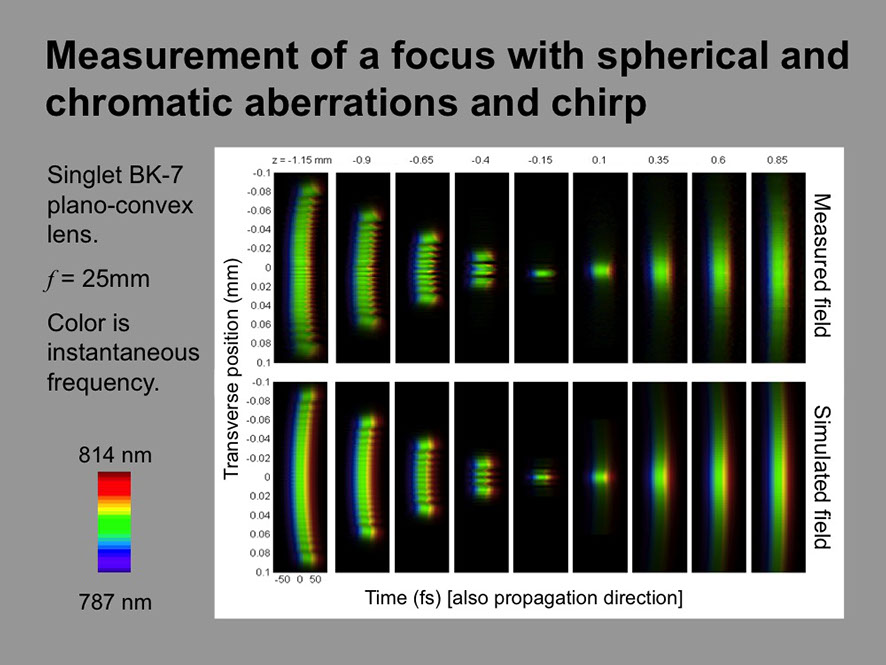Complete Spatio-temporal Pulse Measurement
Often, spatio-temporal distortions can be much more complex than the simple first-order distortions we've discussed so far. Measuring them requires more sophisticated techniques. Fortunately, because SEA TADPOLE and MUD TADPOLE each use a fiber to sample the pulse, they have excellent spatial resolution, in addition to excellent temporal resolution. So, by simply scanning the fiber in space, they can be used to measure the complete spatio-temporal intensity and phase of even tightly focused pulses.

The fringes before the focus are due to spherical aberration, and the extra curvature of the beam before the focus and the reduced curvature after it are due to chromatic aberration. For more information, see Bowlan, et al.
